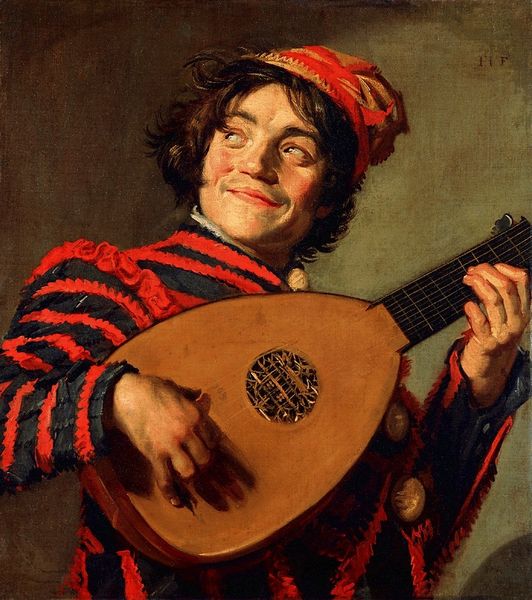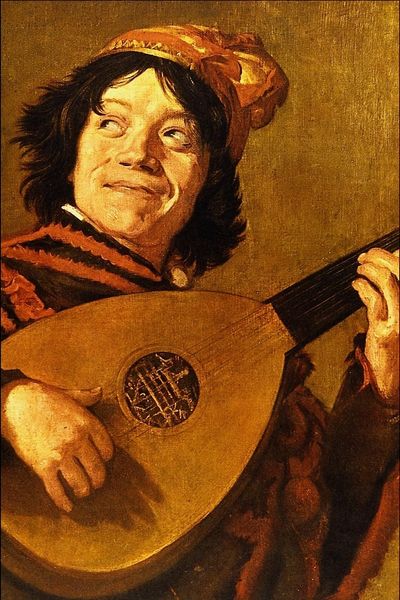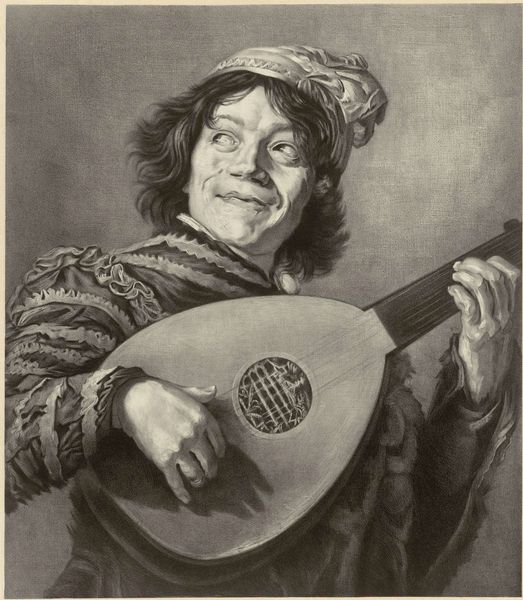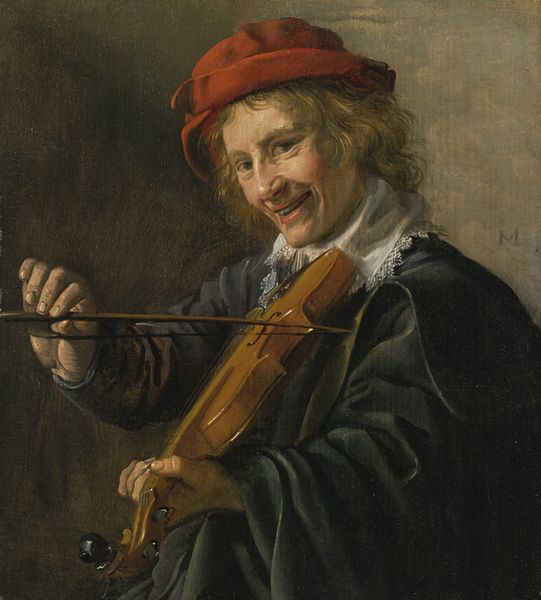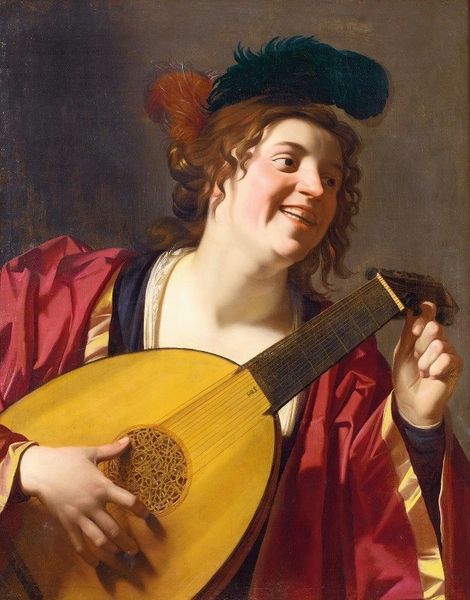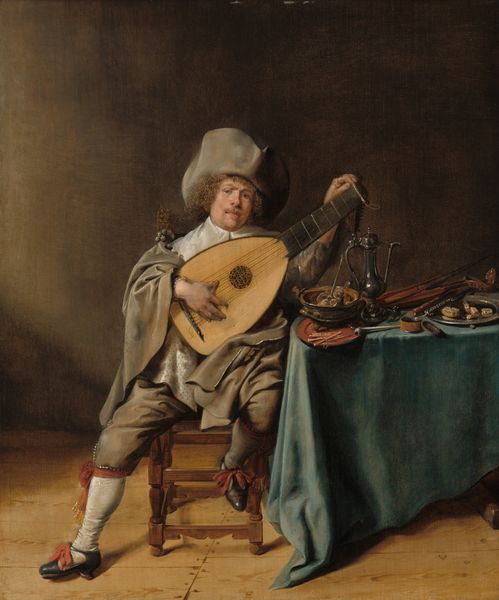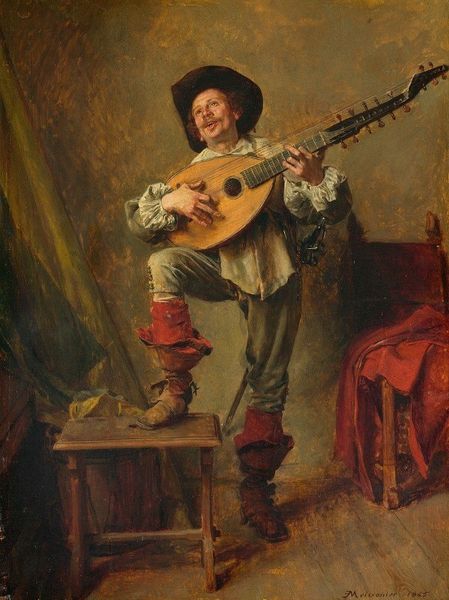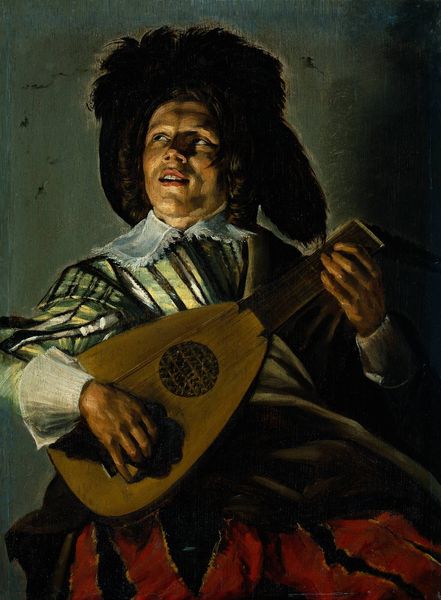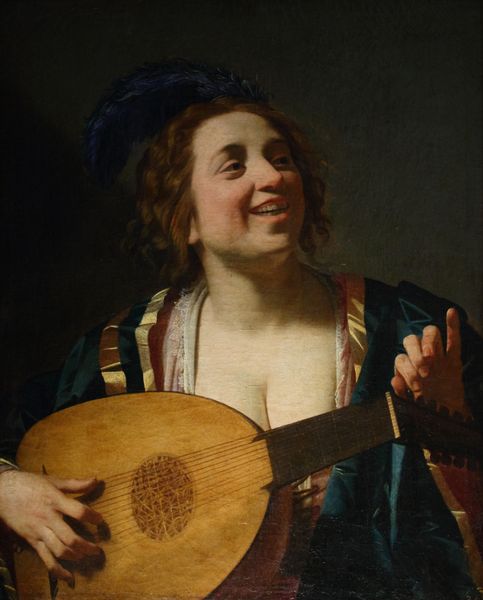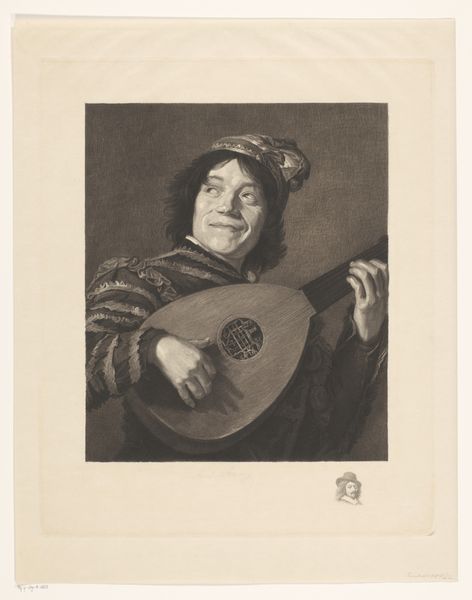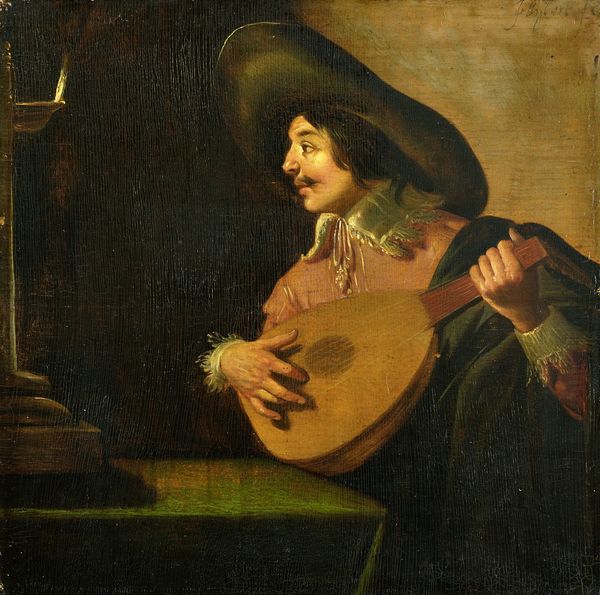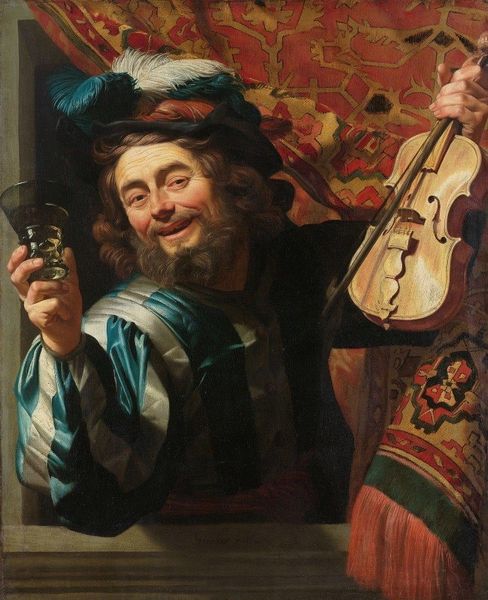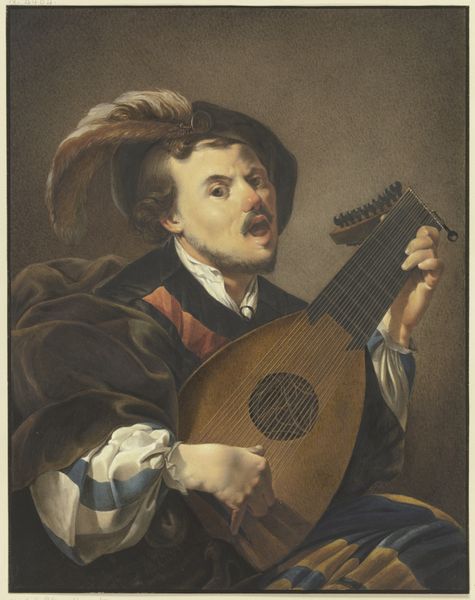
painting, oil-paint
#
narrative-art
#
baroque
#
painting
#
oil-paint
#
chiaroscuro
#
genre-painting
Dimensions: support height 67 cm, support width 60 cm
Copyright: Rijks Museum: Open Domain
Curator: The mood here feels immediately jovial, doesn't it? The warm light, the playful gaze... there's a lightheartedness that's quite striking. Editor: Absolutely. And in that spirit, let's explore Frans Hals’ “The Lute Player,” painted around 1623-1624. It's oil on canvas and resides here at the Rijksmuseum. Curator: Look at how he uses paint! The fabric looks almost… edible. And notice the rapid brushwork capturing the fleeting expression—it's all so immediate, like a snapshot. Editor: This immediacy also reflects broader social shifts. Paintings like this were made for the burgeoning merchant class, eager for genre scenes reflecting everyday life. Consumption wasn’t just about necessity; it was increasingly about displaying affluence through the art one chose. Curator: True, though I wonder about the societal implications embedded in seemingly "everyday life". The figure’s costume seems intentionally…performative? What can it reveal? Editor: Exactly. The clothing blurs class lines, gesturing towards both wealth and theatricality, making the subject someone seemingly caught between social categories, perhaps an entertainer catering to that growing bourgeois market, or somebody appropriating clothes or acting as a character who he really isn’t. Curator: And what about the lute itself? An object made and sold to consumers... who were the luthiers crafting them, what was their class, and did they reap any profits when paintings featuring these items became hits? Editor: Good questions. The lute was often associated with leisure, courtship, but also potentially seen as… frivolous, and the painting challenges that a little. By presenting a musical, lively image, it subtly contests the rigid morality often associated with certain social strata. There are complex politics woven in this ostensibly happy tableau. Curator: Ultimately, Hals' work, like many, acts as a site of confluence where raw material, the socio-economic climate of its era, and its cultural connotations are made apparent to any contemporary audience with eyes to look for these clues. Editor: I agree. Looking closely reveals the layers of meaning embedded even in these seemingly straightforward, jovial, genre paintings, urging us to consider both artistic skill and the societal dynamics at play.
Comments
No comments
Be the first to comment and join the conversation on the ultimate creative platform.
